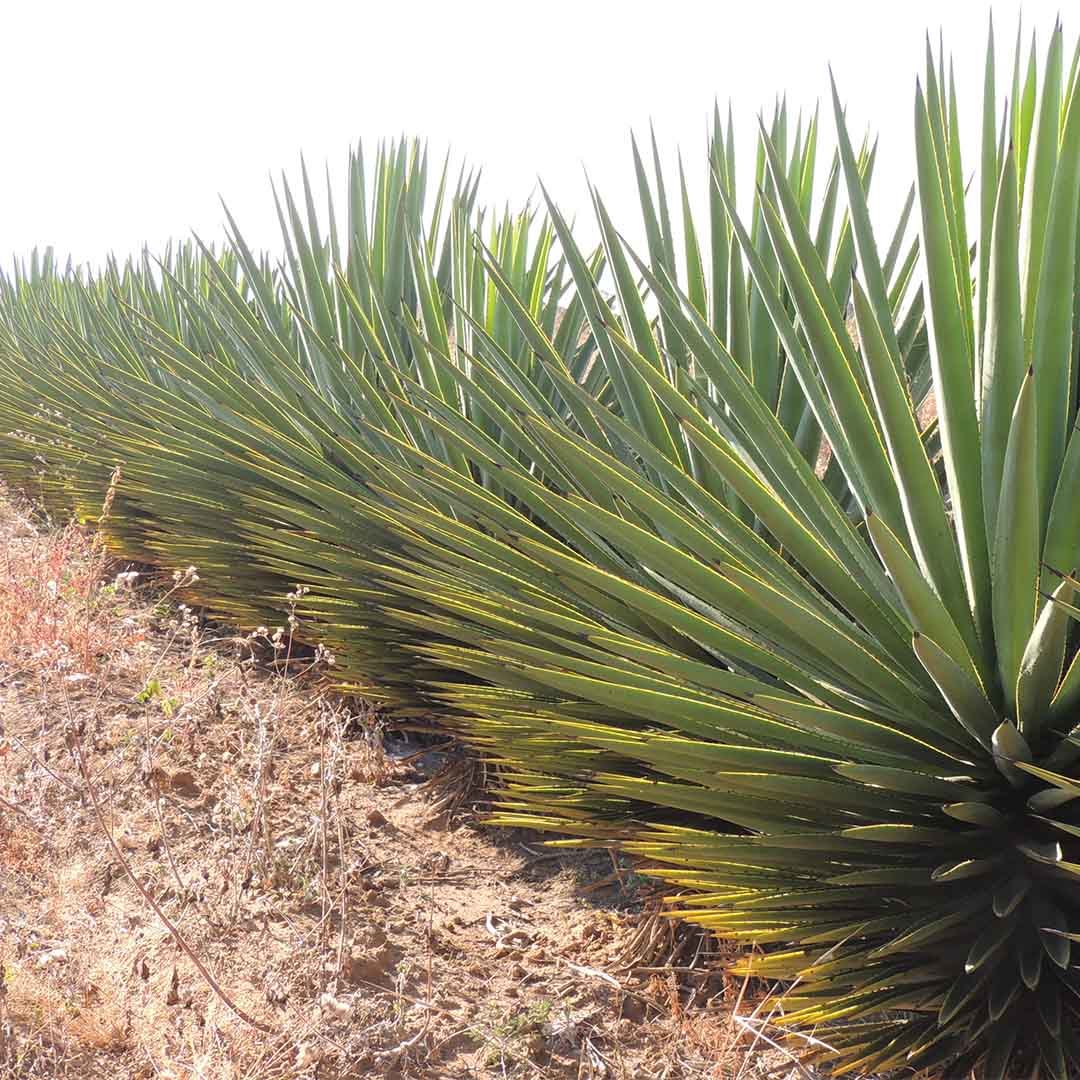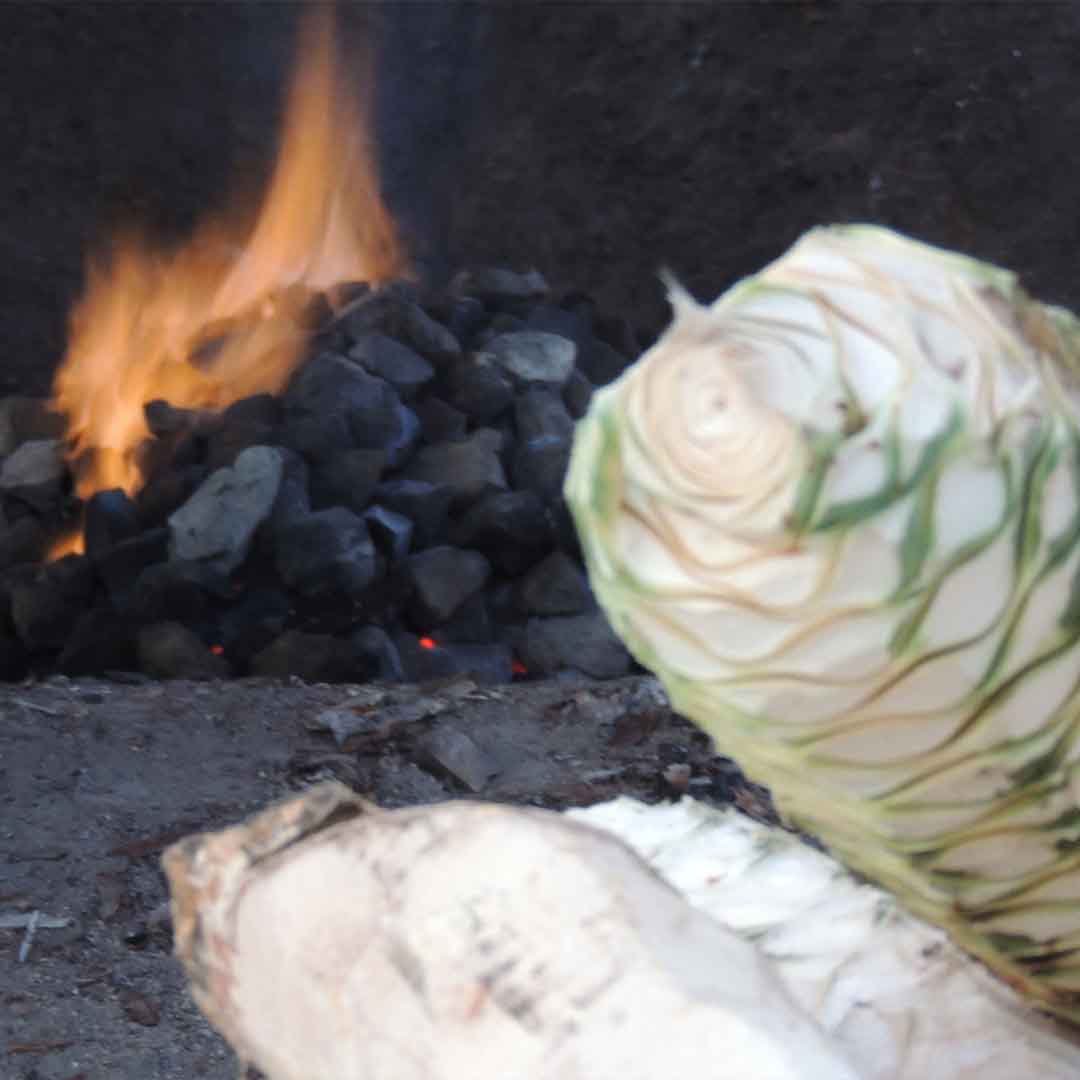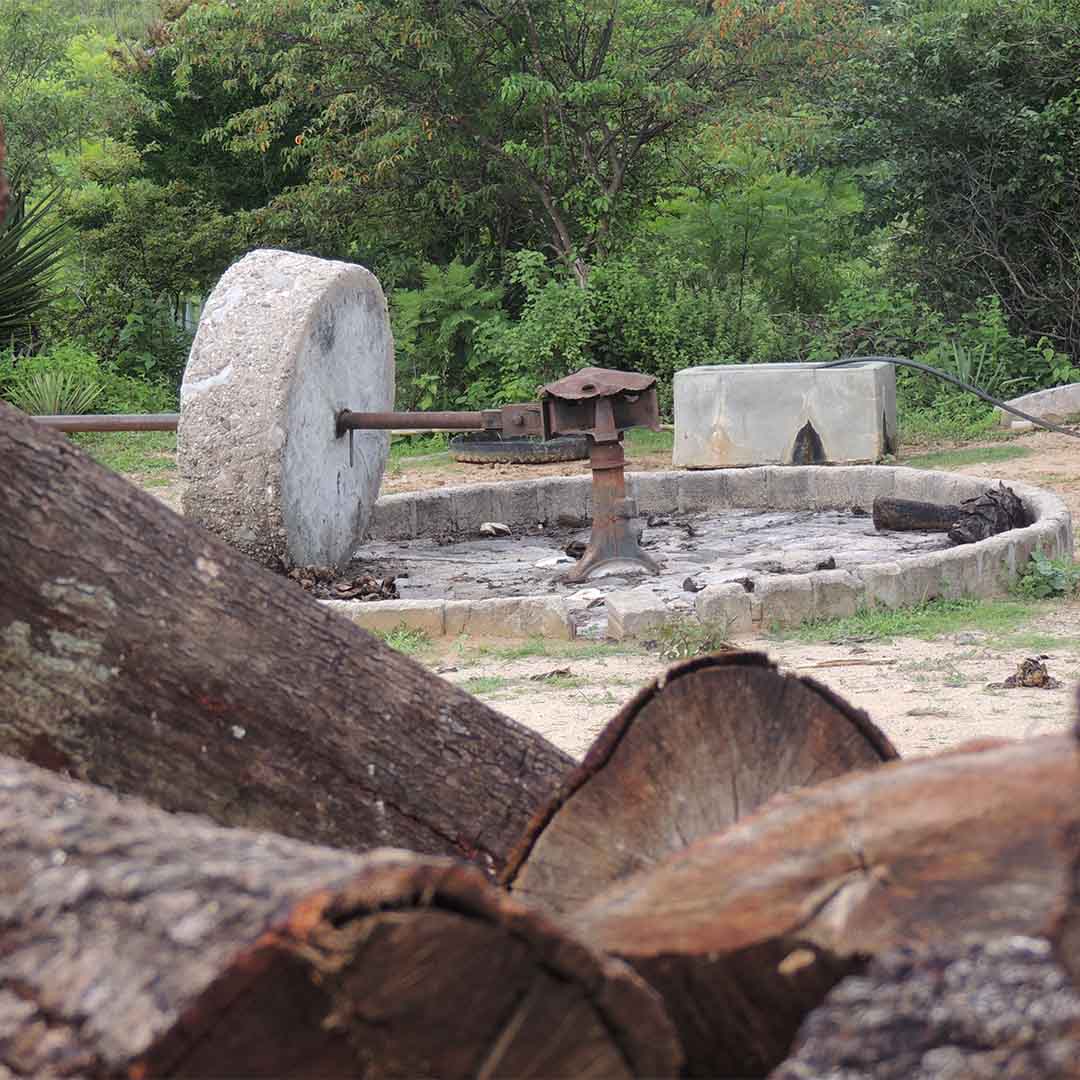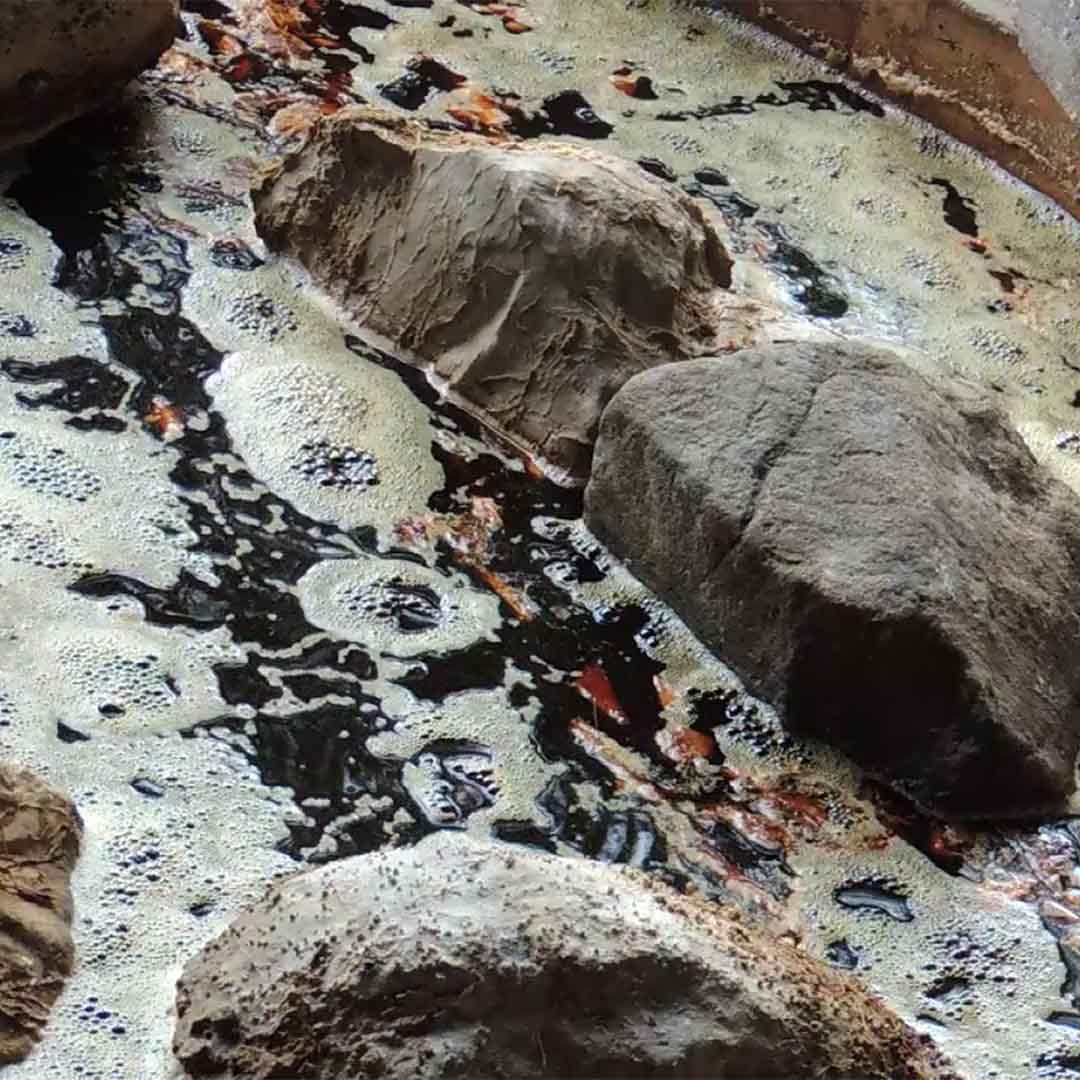The plant has to be mature to yield richer, more flavorsome and more complex mezcals. Some of the agaves are cultivated but most are wild agaves growing in the hills of the region where the producer is located. So, locating and identifying which of the plants are ready for harvest is an art to itself. Then comes the hard part: each piña, the fruit at the bottom of the plant, is removed from the ground using a coa, a long wooden stick with a sharp flat blade.
This furnace is a hole manually created in the ground covered by volcanic rock: the first step is to heat the rock with firewood evenly. Regional hard woods, including mesquite, are placed at the center of the oven and lit. Mesquite is chosen specifically for the flavor it imparts. The wood is then covered by river stones until they are white hot. Once recognizing the best point of the rocks by the mezcalero master (process that has been followed since ancestral times) he proceeds to pile the cut pineapples on the rocks. Then, the oven is filled completely without leaving any empty space, including sacks topped with earth, wood and stones to keep the heat inside and to obtain the best cooking which usually lasts several days until the mezcalero master approves and finishes it. It is in this part of the process that the smoky notes of mezcal appear.
The process begins with the grinding, where with the help of a machete to leave the agave pineapples in small pieces the maestro mezcalero proceeds to crush the agave with a circular stone called “tahona”, in order to obtain that the fiber is undone and be able to work the fermentation in a much better way.





